- Your skin
-
Our products
Do you know well atopic dermatitis ?
DEXERYL supports you and take care of your dry skin each day
-
CLINICAL RESULTS
- About dexeryl
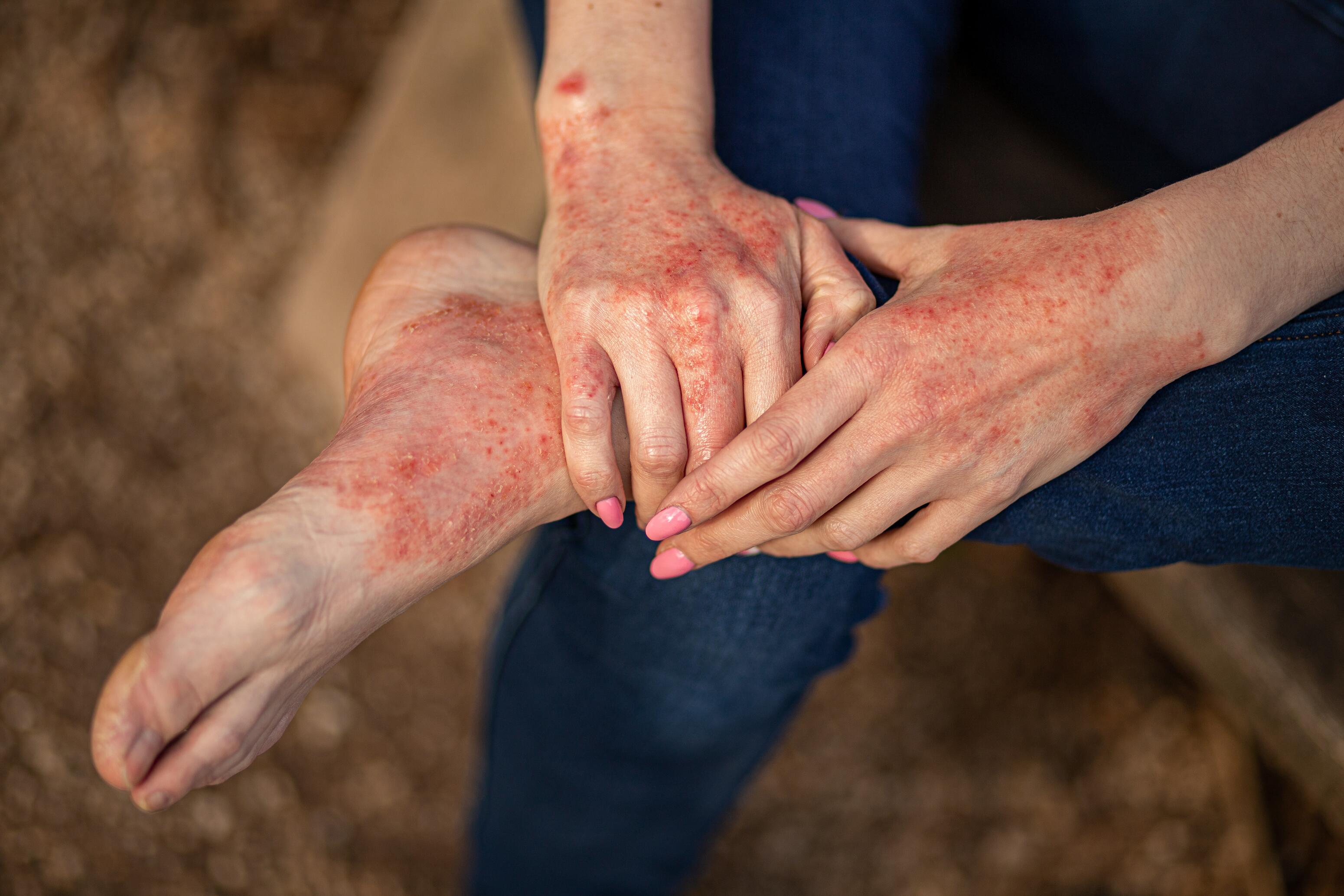
Discover how to recognize eczema in adults with illustrative photos. Get insights on causes and treatments for maintaining healthy skin.
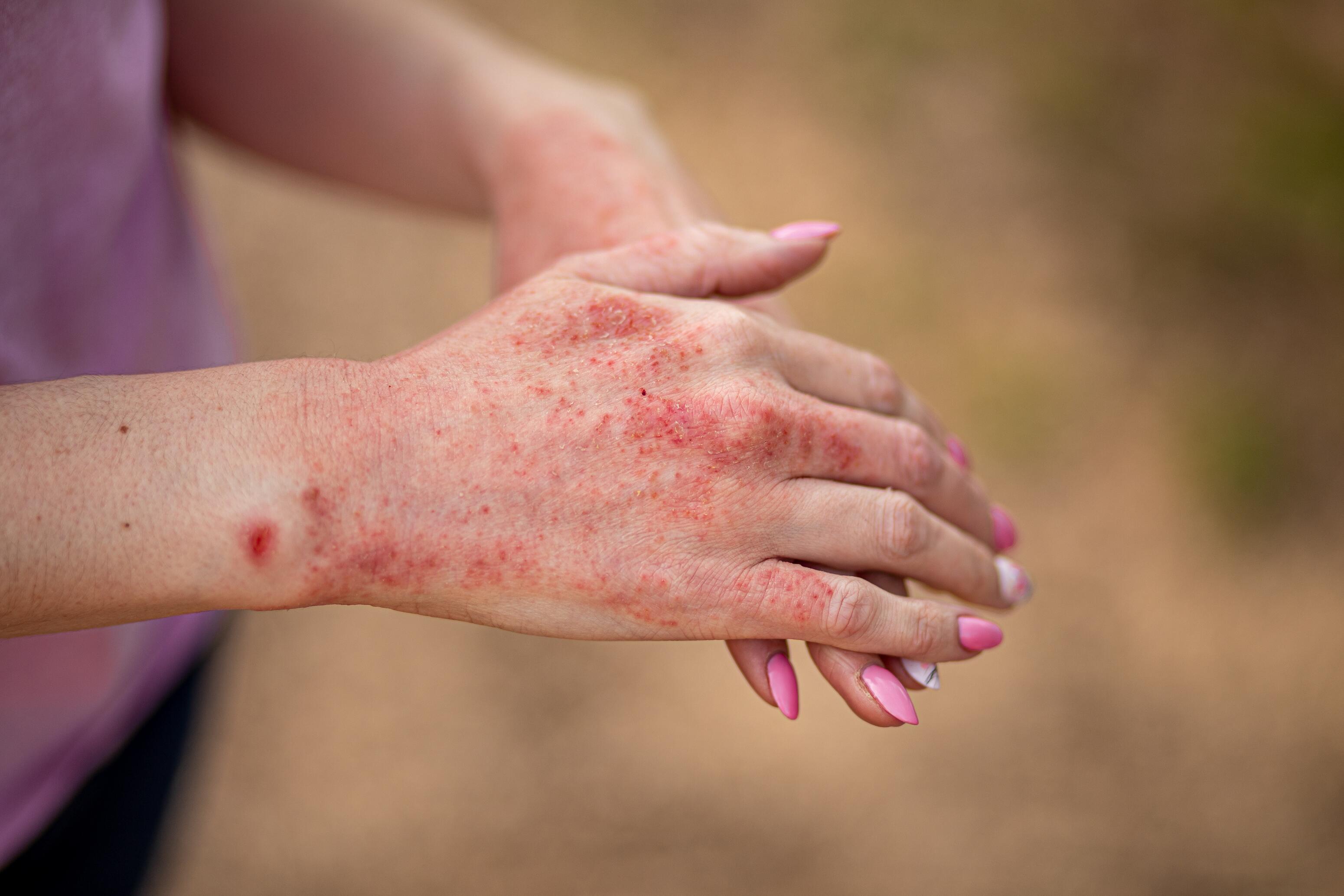
Summary
Eczema in adults refers to a group of chronic inflammatory skin diseases marked by intense itching and skin lesions forming plaques. These lesions can appear on various body parts and vary in severity. Common symptoms include skin dryness, itching, redness, swelling, oozing, blisters, and crusting¹ ².
Multiple types of eczema can occur in adults, and it's possible for an individual to have several types concurrently¹ ³.
While "eczema" and "atopic eczema" are often used interchangeably, they are not synonymous. Atopic eczema, or atopic dermatitis, is a specific type of eczema, but not all eczemas are atopic.
Atopic eczema primarily affects infants and children and often resolves during adolescence. However, in 10 to 15% of cases, it persists into adulthood. In rare cases, atopic eczema first appears in adults.
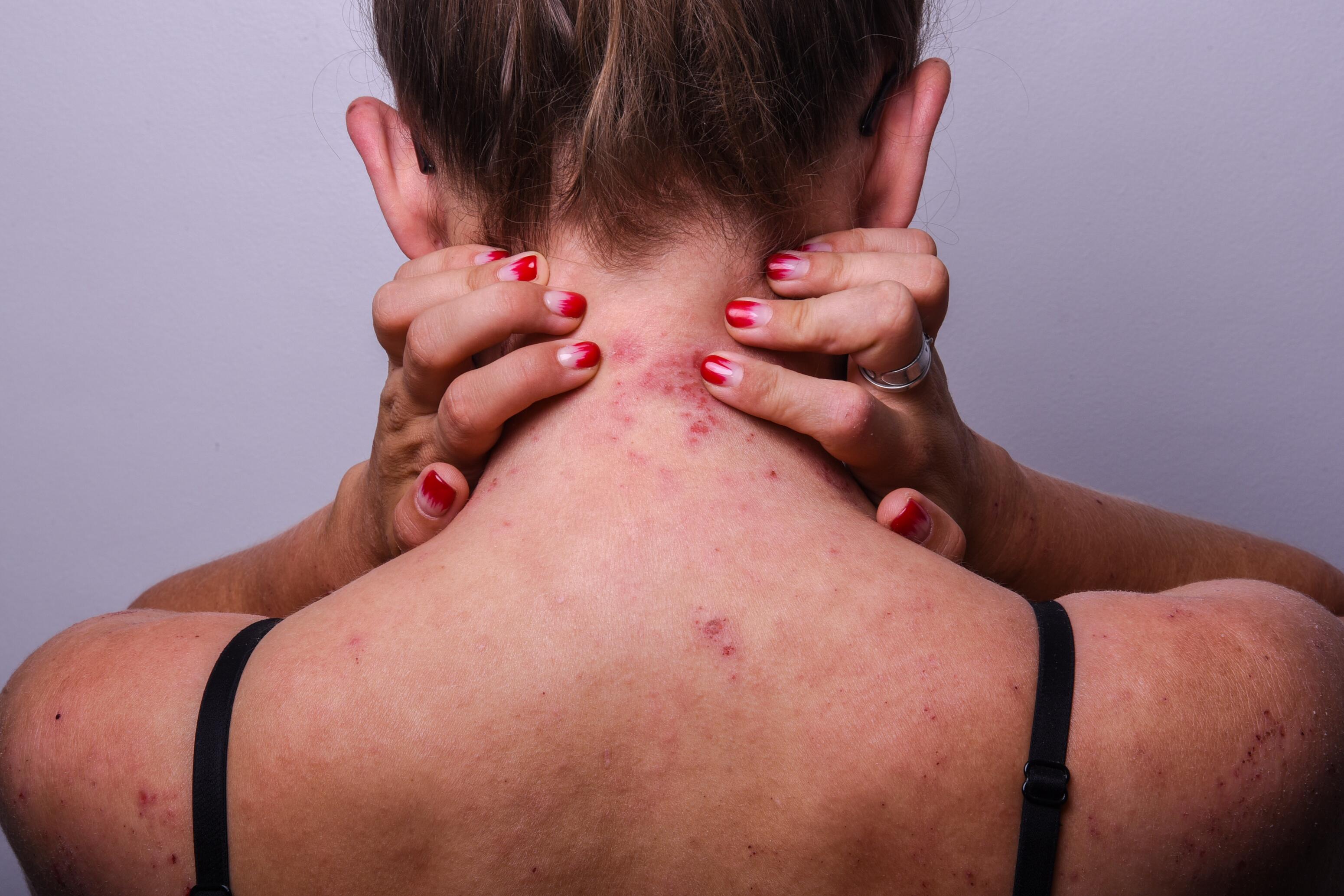
Characteristics of atopic eczema include skin dryness, itching, plaque-type lesions, redness, blisters, oozing, and crusting, evolving in flare-ups.
Contact eczema, whether irritant or allergic, typically occurs in areas in contact with irritants or allergens, commonly affecting the hands, neck, and face. Certain professions are more prone to contact eczema due to exposure to specific products like detergents, glues, dyes, gloves, etc.
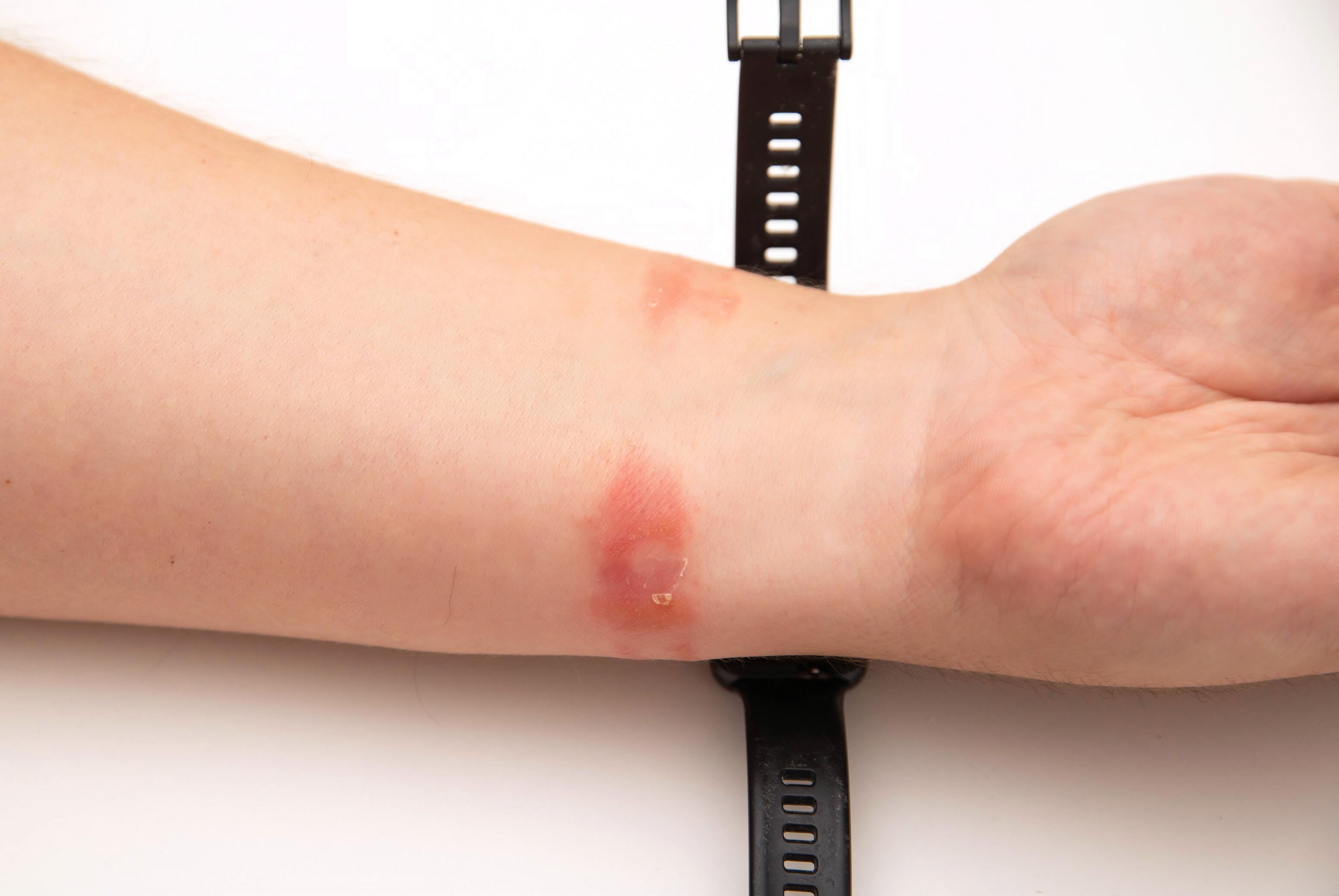

Dyshidrosis, or pompholyx, is characterized by small blisters on the palms, sides of fingers, or soles of the feet, often accompanied by intense itching and sometimes pain.
Nummular eczema, also known as discoid dermatitis, presents with round or oval lesions resembling coins. These well-defined, sometimes weeping, crusted or scaly plaques typically affect the legs, arms, and hands. The causes of nummular eczema are not fully understood.


Associated with venous circulation disorders, varicose eczema, or stasis dermatitis, typically appears around the ankles, causing itching, redness, thickened skin, oozing, or ulcerations.
The causes of adult eczema are multifactorial, involving a combination of genetic, immune, environmental, and psychological factors.

Eczema, particularly atopic dermatitis, often arises from a genetic predisposition. Mutations such as those in the filaggrin gene weaken the skin barrier and its defense against irritants and allergens.
Individuals with atopic eczema have an overreactive immune system, producing elevated levels of allergic-type (IgE) antibodies in the presence of environmental allergens.


Eczema can be exacerbated by various environmental factors. Irritants like soap, rough textiles, certain foods, climate variations, sweat, cigarette smoke, pollution, some medications, and infections can trigger or worsen symptoms.
Stress stimulates inflammation and can weaken the skin barrier. Stress-induced behaviors, including scratching eczema patches, can worsen eczema and lead to infectious complications, creating a vicious cycle where stress and eczema reinforce each other.

Certain triggers or aggravators are characteristic of specific types of adult eczema:
The diagnosis of eczema in adults is primarily clinical, meaning that an examination of the skin and lesions by a dermatologist or general practitioner will usually suffice for diagnosing eczema¹.
While they don't replace clinical examination, photos of eczema are a valuable diagnostic tool.
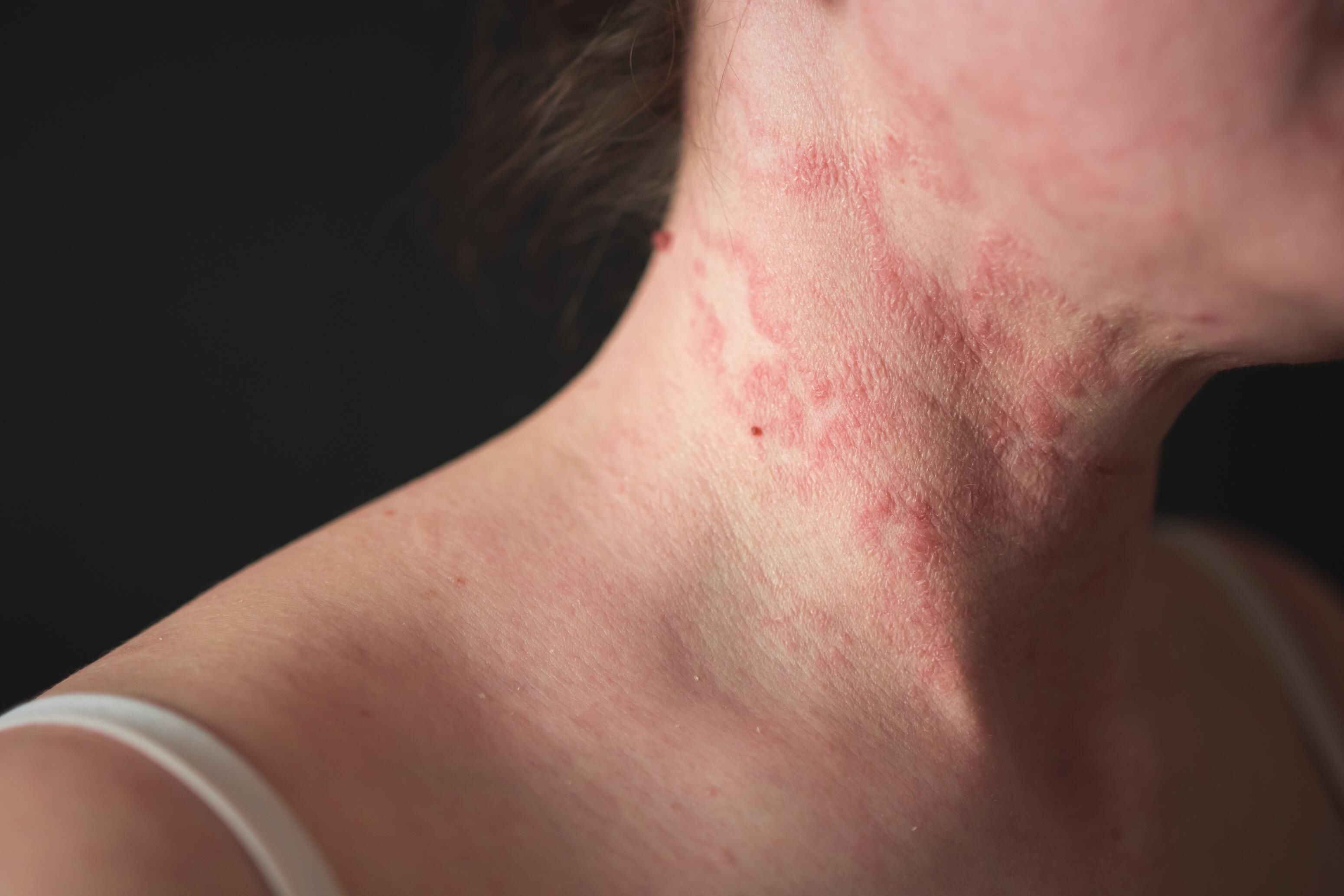
Photos of eczema plaques during a flare-up allow for instant documentation of lesions. The clinical presentation of eczema may change within the time before a doctor's consultation.
Photos help track the progression of adult eczema and the effectiveness of treatment. Regularly taking pictures to show your doctor during appointments is recommended.
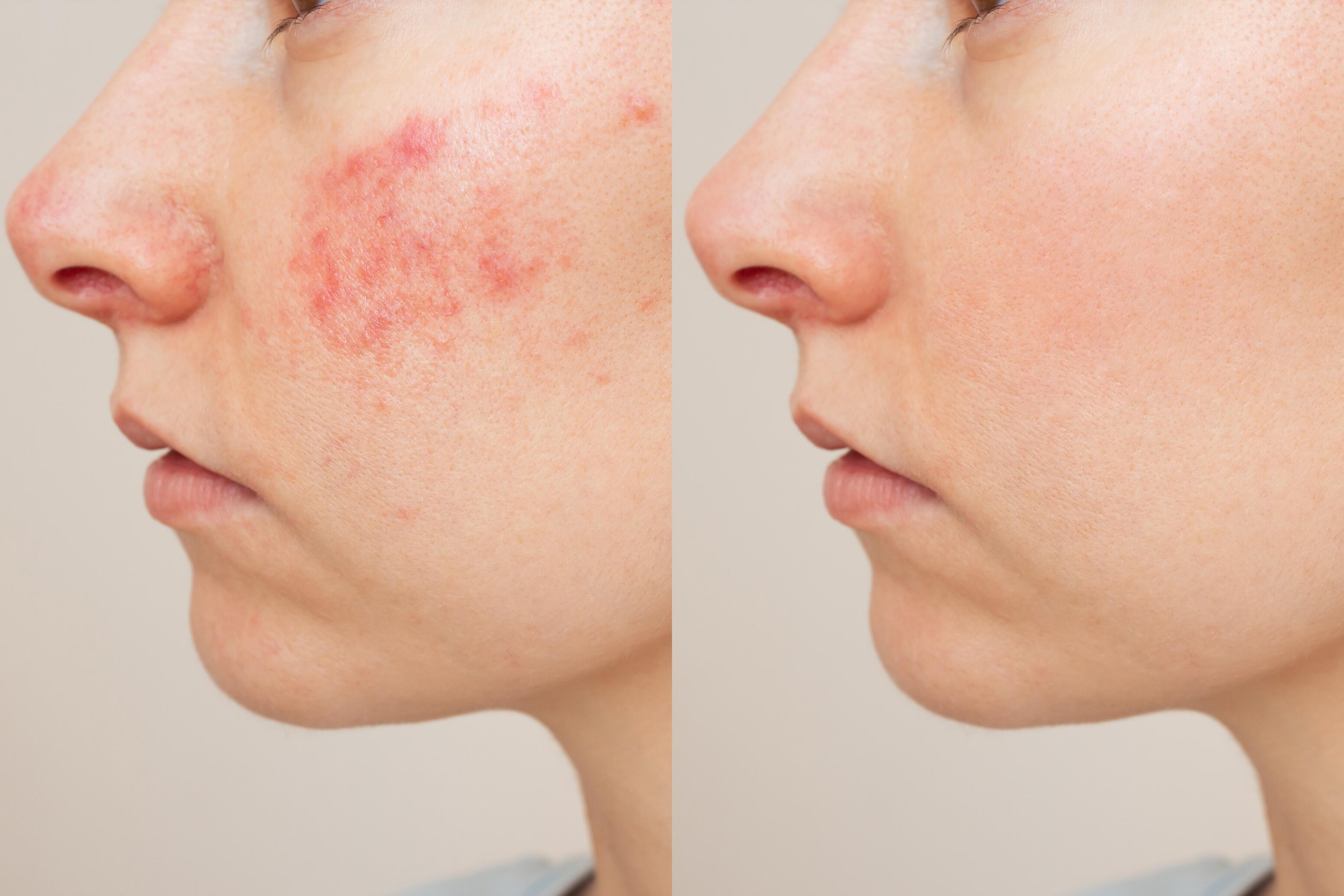

With remote medical consultations, photos allow healthcare professionals to examine lesions from a distance.
By observing the appearance and distribution of eczema plaques in photos, doctors can distinguish eczema from other skin diseases with similar presentations.


Photos can easily be shared with dermatologists or other specialists for a second opinion.
Doctors can use photos to show patients the progression of their eczema, helping them understand their condition and its management.


The treatment of adult eczema primarily focuses on regular skin hydration using an emollient, to repair the skin barrier and reduce the frequency of flare-ups. Tailored for the unique requirements of dry and atopic skin, Dexeryl Emollient Cream presents a holistic care approach for adult eczema management. This medical device product delivers profound hydration and aids in rejuvenating the skin's barrier function, actively preventing the formation of eczema lesions.
With its straightforward and clinically-tested composition, devoid of fragrances and parabens, the cream effectively alleviates itching and skin tightness, diminishing reliance on corticosteroids.
During flare-ups, local treatment may be necessary. Doctors prescribe creams or ointments with topical corticosteroids to apply to the plaques to reduce inflammation and itching.
To prevent eczema flare-ups:
For severe eczema or when standard treatments prove ineffective, dermatologists may consider prescribing local or oral immunosuppressants, UVA/UVB phototherapy, or specialized treatments.
Effective management of adult eczema often necessitates a tailored approach under medical guidance. General practitioners are well-equipped to treat mild eczema, but a dermatologist's expertise may be required in certain situations, such as:
Diagnostic uncertainty needing further investigation.
Lack of improvement despite initial treatments prescribed by your GP.
Moderate to severe eczema cases, potentially needing advanced care like phototherapy or systemic treatments.
Escalating symptoms, like spreading, intensifying pain, or infection of the lesions.
Adverse reactions to current treatments.
Significant impact on quality of life, affecting sleep, mood, work, or social activities.
Prompt consultation with a GP or a visit to the emergency department is advisable for complications like infected eczema lesions.
References:
1. L’Assurance Maladie. Eczéma ou dermatite atopique : causes, symptômes et évolution. Ameli.fr. Septembre 2023. [Disponible sur :] https://www.ameli.fr/assure/sante/themes/eczema-atopique/reconnaitre-eczema-atopique
2. Nemeth V, Evans J. Eczema. National Library of Medicine. Août 2022. [Disponible sur :] https://www.ncbi.nlm.nih.gov/books/NBK538209/
3. American Academy of Dermatology. Eczema: types and treatments. AAD. 2023. [Disponible sur :] https://www.aad.org/public/diseases/eczema/types
4. INSERM. Dermatite atopique (eczéma atopique). Une maladie chronique inflammatoire de la peau fréquente. INSERM.fr. Juillet 2017. [Disponible sur :] https://www.inserm.fr/dossier/dermatite-atopique-eczema-atopique/
5. Litchman G, Nair PA, Atwater AR, et al. Contact Dermatitis. National Library of Medicine. Janvier 2023. [Disponible sur :] https://www.ncbi.nlm.nih.gov/books/NBK459230/
6. Calle Sarmiento PM, Chango Azanza JJ. Dyshidrotic Eczema: A Common Cause of Palmar Dermatitis. Cureus. Octobre 2020;12(10):e10839.
7. Dubin C, Del Duca E, Guttman-Yassky E. Drugs for the Treatment of Chronic Hand Eczema: Successes and Key Challenges. Ther Clin Risk Manag. Décembre 2020;16:1319-1332.
8. Yosipovitch G, Nedorost ST, Silverberg JI, Friedman AJ, Canosa JM, Cha A. Stasis Dermatitis: An Overview of Its Clinical Presentation, Pathogenesis, and Management. Am J Clin -Dermatol. Mars 2023;24(2):275-286.
9. Arndt J, Smith N, Tausk F. Stress and atopic dermatitis. Curr Allergy Asthma Rep. Juillet 2008;8(4):312-7.
10. Kashetsky N, Mar K, Liu C, Rivers JK, Mukovozov I. Photography in dermatology - a scoping review: Practices, skin of color, patient preferences, and medical-legal considerations. J Dtsch Dermatol Ges. Octobre 2023;21(10):1102-1107.
11. L’Assurance Maladie. La consultation et le traitement en cas d'eczéma ou dermatite atopique. Ameli.fr. Septembre 2023. [Disponible sur :] https://www.ameli.fr/assure/sante/themes/eczema-atopique/consultation-traitement
12. L’Assurance Maladie. Que faire et quand consulter. Ameli.fr. Septembre 2023. [Disponible sur :] https://www.ameli.fr/assure/sante/themes/eczema-atopique/que-faire-quand-consulter